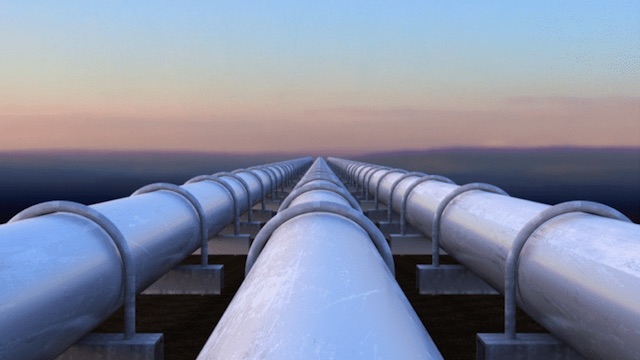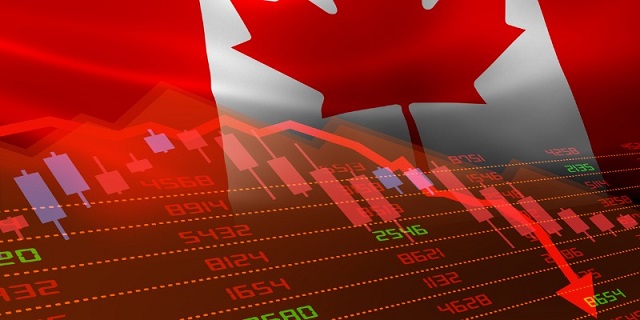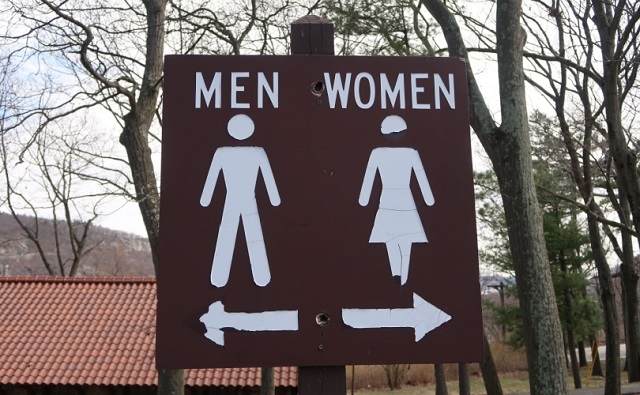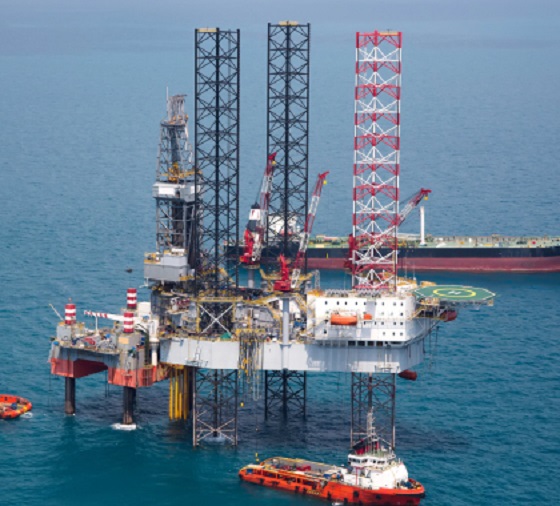Economy
Wrapping Up Canadian Energy 2023 – Prosperity, Power Struggles, Pipelines, EV Promises and “Pie in the Sky” Politics

From EnergyNow Media
By Deidra Garyk
2023 was an optimistic year in the Canadian oil patch. The +15 walkway system in downtown Calgary has been buzzing with the energy of people hurrying to business meetings and networking events.
Some of those scurrying about were headed to talk multi-billion-dollar merger and acquisition (M&A) deals that the patch continued to experience throughout the year. Traditional oil companies also bought alternative energy and carbon tech companies. Carbon capture, utilization and storage (CCUS) was the investment decision of the year.
Oil and gas prices remained relatively high. Not great, but not in the toilet like the dark years of 2015 to 2021. That meant government coffers filled, easing some of the debt burden accumulated during COVID. Oil and gas companies, producers and the many service providers who support the production, were able to continue paying down debt and providing returns to patient shareholders.
Canadian majors Suncor, Cenovus, and Enbridge went through leadership changes at the top. I wish these men success and courage. They are going to need it to embolden pragmatism at all levels of government.
The Canadian federal government continues to be all-in on climate and green energy, seemingly to the exclusion of traditional, reliable energy sources. Although, since climate change has taken a backseat to affordability and energy security for the voting public – the only people politicians really care about – the Liberals have had to rebrand some programs to get buy-in.
One example is renaming the “Just Transition” the Sustainable Jobs Plan. Other than the name, not much has changed. There is still a push for unionized, non-oil and gas jobs.
The feds “invested” (their word, not mine) billions of dollars in EV battery plants, continuing to go all-in on 100 percent EV car sales in twelve years. Senior bureaucrats at Transport Canada even touted the nearness of EV heavy-duty commercial transportation and equipment. (Someone should tell them it will not work well in remote locations with no charging infrastructure.) Energy and Natural Resources Minister Jonathan Wilkinson lauded the day when agricultural equipment goes all electric, fantasizing about the economic boon that will bring. (Someone else should tell him it will not be experienced by farmers who have to spend their hard-earned dollars on equipment replacements.)
Joe Biden visited Ottawa in March. I happened to be there for a conference, so I got to experience the pomp and circumstance first-hand. I have never seen so much security, and I have travelled to places under military control and lived in a country that remains perpetually under the threat of foreign invasion.
Biden’s motorcade is a long, emissions-belching row of vehicles. I did not see any EVs. It includes two “Beasts” (one used as a decoy while the other transports the President), an ambulance, and several tricked-out SUVs. It is quite a spectacle.
As expected, topping the list of topics on the visit’s agenda, President Biden and Prime Minister Trudeau talked about energy and climate, as outlined in their joint statement.
Global sustainability reporting standards were released in June and come into effect January 1, 2024. Publicly traded companies are waiting for Canada to release jurisdiction-specific regulations to understand the magnitude of what will be required. In the Fall Economic Update, released November 22, the feds said rules will be put in place to extend mandatory climate reporting to private companies. That is a big hint at what all companies should expect, at a minimum.
You can listen to my podcast on the subject with energy analyst Dr. Tammy Nemeth here.
On the topic of climate, Bill S-243, An Act to enact the Climate-Aligned Finance Act and to make related amendments to other Acts passed second reading in the Senate in June. You may think this is just some boring Senate bill, but oil and gas boards and employees need to be aware of it.
The bill aims to restrict investment in hydrocarbons, forces companies to set climate commitments, and dictates who has to be part of a company’s board of directors. Worse, section 13(1) Appointment – restriction outlines who cannot be a board member – anyone who works in or owns shares in a fossil fuel company.
It goes as far as to include: “And whereas investment in energy efficiency, clean energy and clean technologies and the incentivization of innovation and behavioural change must replace investments in greenhouse-gas-emission-intensive activities for effective action against climate change.” It targets “fossil fuel activity” in the definition of “emissions-intensive activities”.
Alignment with climate commitments requires that companies:
- take into consideration vulnerable groups, communities and ecosystems, including the biodiversity of those ecosystems,
- make decisions based on equity and the best available science and
- do not promote, foster or exacerbate food insecurity or inequalities in society; and
- do not cause significant harm to social and environmental obligations recognized by Canada.
This bill should trouble any rational person, and it is not getting enough attention. It ramps up climate hysteria and enshrines it into all financial decision making. It is ideological to its core.
I encourage you to read the bill here.
Fortunately, two major, necessary egress projects – Coastal GasLink and Trans Mountain – are well underway before Bill S-243 can stop them. Coastal GasLink reached major milestones of 100 percent pipeline installation and mechanical completion, ahead of schedule. Unfortunately, the federally owned Trans Mountain pipeline has continued to experience delays and a cost increase to $30.9 billion. Although, it was about 80 percent complete in March and expected to be in service in the first quarter of 2024, the project has been delayed due to issues over the route and may not be completed until the end of 2024.
Canada’s summer wildfire season had environmental activists hot and bothered, blaming one thing, and one thing only – climate change!
Calgary hosted the 24th World Petroleum Congress and world energy leaders in September. The torch was passed on to Saudi Arabia to host next. Based on their booth, it will be an extravaganza that will undoubtedly proudly display their oil and gas development. Energy and Natural Resources Minister Jonathan Wilkinson dutifully kept to the Liberal’s script and was challenged to mention the words “oil” and “gas” during his speech at the World Petroleum Congress. This caused the ire of Alberta Premier Danielle Smith, who has had it with the feds’ attitude towards oil and gas.
She has now invoked the Alberta Sovereignty Act in an attempt to prevent the federal government from being able to enact the Clean Electricity Standard by 2035. She has taken a lot of heat for it, but Saskatchewan’s Premier Scott Moe did it first with the colloquially named Saskatchewan First Act. When adversarial Environment and Climate Change Canada Minister Steven Guilbeault threatened to criminalize the use of coal-fired power generation past 2030, Moe puffed out his chest and said, “come get me!”
For all the partisan naysayers attacking the Premiers, I recommend reading Electricity Canada’s response to the Clean Electricity Regulations. It is emotionless and objective, and it sides with the Premiers.
Good thing there is serious discussion about the electricity grid and reliability happening in the Edmonton Legislature because Alberta’s grid operator AESO has issued several warnings in the last year, on both hot and cold days. This has me impatiently waiting for the 2,700 megawatts of new natural gas-powered generation to come on in 2024.
November was all about the carbon tax fight. The feds doubled down on the importance of carbon taxes in the fight against global warming, but not in regions where their sitting MPs risk losing their seats (i.e. their jobs) in the next election. If you think it was not political, you are fooling yourself. They are still fighting over the applicability of a tax on farmers. As someone who eats, I would like it removed to keep the cost of food down.
Premier Moe will not charge Saskatchewan residents carbon tax on natural gas and electricity used to heat homes. This seems reasonable considering that it gets really, really, really cold in Saskatchewan for many days in the winter and reliable energy is a must.
In a hotter region of the world, Dubai, United Arab Emirates hosted COP28 in December. It is the twenty eighth UN climate conference, and yet we appear no closer to solving the thing they say is a crisis – rising emissions. The globe reached the height of emissions in 2023, even though coal use is down and renewable energy capacity and investment is up, up, up, according to the International Energy Agency.
As expected, Canada made various expensive pledges. Minister Guilbeault bounces to the podium for a photo op, drops a climate pledge or two, and the rest of us are left trying to figure out how to meet the commitment. The most contentious for Alberta and Saskatchewan was the oil and gas emissions cap that has been called a de facto production cap.
GEOPOLITICS
With energy security remaining a priority for citizens, nuclear is no longer a bad word. Countries and regions are expanding existing nuclear infrastructure and there is increasing public acceptance for small modular reactors. The false fear tactics used by the anti-nuclear activists have finally been shown for what they are – exaggerated and untrue.
The BRICS alliance expanded with the addition of six new members: Iran, Saudi Arabia, Egypt, Ethiopia, Argentina, and the United Arab Emirates.
Not only are the BRICS nations population and economic power players, they hold the keys to unlocking vast reserves of reliable energy. Total oil production from BRICS nations will be between 40-45 percent of global oil production, more than OPEC’s 35-40 percent. In addition, the members hold vast reserves of the minerals needed for any future energy transformation.
Forty other countries applied to join, demonstrating an interest in the group. Western leaders and NGOs would be wise to pay attention to the growing influence of the BRICS, even if they dislike some of the members.
BRICS is my geopolitical story of the year as it continues to disrupt global energy markets. In 2022, India increased purchases of discounted Russian oil by forty percent. This year, India purchased oil from the United Arab Emirates in rupees, their local currency. These are two examples of the shifts that are happening but are seemingly ignored by the West.
Overall, it appears that pragmatism and realism are influencing political energy decisions, and 2024 is expected to be another positive year for the Canadian oil patch.
All the best for the new year. May you enjoy peace and prosperity.
About Deidra Garyk
Deidra Garyk has been working in the Canadian energy industry for almost 20 years. She is currently the Manager, ESG & Sustainability at an oilfield service company. Prior to that, she worked in roles of varying seniority at exploration and production companies in joint venture contracts where she was responsible for working collaboratively with stakeholders to negotiate access to pipelines, compressors, plants, and batteries.
Outside of her professional commitments, Deidra is an energy advocate and thought leader who researches, writes, and speaks about energy policy and advocacy to promote balanced, honest, fact-based conversations.
Economy
‘Gambling With The Grid’: New Data Highlights Achilles’ Heel Of One Of Biden’s Favorite Green Power Sources

 From the Daily Caller News Foundation
From the Daily Caller News Foundation
By NICK POPE
New government data shows that wind power generation fell in 2023 despite the addition of new capacity, a fact that energy sector experts told the Daily Caller News Foundation demonstrates its inherent flaw.
Wind generation fell by about 2.1% in 2023 relative to 2022 generation, despite the 6 gigawatts (GW) of wind power capacity that came online last year, according to data published Tuesday by the U.S. Energy Information Administration (EIA). That wind power output dropped despite new capacity coming online and the availability of government subsidies highlights its intermittency and the problems wind power could pose for grid reliability, energy sector experts told the DCNF.
The decrease in wind generation is the first drop on record with the EIA since the 1990s; the drop was not evenly distributed across all regions of the U.S., and slower wind speeds last year also contributed to the decline, according to EIA. The Biden administration wants to have the American power sector reach carbon neutrality by 2035, a goal that will require a significant shift away from natural gas- and coal-fired power toward wind, solar and other green sources.

A table depicting the decrease of wind power generation in 2023 relative to 2022. (Screenshot via U.S. Energy Information Administration)
“Relying on wind power to meet your peak electricity demands is gambling with the grid,” Isaac Orr, a policy fellow at the Center of the American Experiment who specializes in power grid-related analysis, told the DCNF. “Will the wind blow, or won’t it? This should be a moment where policymakers step back and consider the wisdom of heavily subsidizing intermittent generators and punishing reliable coal and gas plants with onerous regulations.”
Between 2016 and 2022, the wind industry received an estimated $18.6 billion worth of subsidies, about 10% of the total amount of subsidies extended to the energy sector by the U.S. government, according to an August 2023 EIA report. Wind power received more assistance from the government than nuclear power, coal or natural gas over the same period of time.
“This isn’t subsidies per kilowatt hour of generation. It’s raw subsidies. If it were per kilowatt hour of generation, the numbers would be even more extreme,” Paige Lambermont, a research fellow at the Competitive Enterprise Institute, told the DCNF. “This is a massive amount of money. It’s enough to dramatically alter energy investment decisions for the worse. We’re much more heavily subsidizing the sources that don’t provide a significant portion of our electricity than those that do.”
“Policy that just focuses on installed capacity, rather than the reliability of that capacity, fails to understand the real needs of the electrical grid,” Lambermont added. “This recent disparity illustra
Wind power’s performance was especially lackluster in the upper midwest, but Texas saw more wind generation in 2023 than it did in 2022, according to EIA. Wind generation in the first half of 2023 was about 14% lower than it was through the first six months of 2022, but generation was higher toward the end of 2023 than it was during the same period in 2022.
In 2023, about 60% of all electricity generated in the U.S. came from fossil fuels, while 10% came from wind power, according to EIA data. Beyond generous subsidies for preferred green energy sources, the Biden administration has also aggressively regulated fossil fuels and American power plants to advance its broad climate agenda.
Biden’s Climate Bill Boosted An Offshore Wind Giant, But His Economy Brought It To The Brink https://t.co/AF7SPT2FNu
— Daily Caller (@DailyCaller) November 3, 2023
The Environmental Protection Agency’s (EPA) landmark power plant rules finalized this month will threaten grid reliability if enacted, partially because the regulations are likely to incentivize operators to close plants rather than adopt the costly measures required for compliance, grid experts previously told the DCNF. At the same time that the Biden administration is effectively trying to shift power generation away from fossil fuels, it is also pursuing goals — such as substantially boosting electric vehicle adoption over the next decade and incentivizing construction of energy-intensive computer chip factories — that are driving up projected electricity demand in the future.
“The EIA data proves what we’ve always known about wind power: It is intermittent, unpredictable and unreliable,” David Blackmon, a 40-year veteran of the oil and gas industry who now writes and consults on the energy sector, told the DCNF. “Any power generation source whose output is wholly dependent on equally unpredictable weather conditions should never be presented by power companies and grid managers as safe replacements for abundant, cheap, dispatchable generation fueled with natural gas, coal or nuclear. This is a simple reality that people in charge of our power grids too often forget. Saying that no doubt hurts some people’s feelings, but nature really does not care about our feelings.”
Blackmon also pointed out that, aside from its intermittency, sluggish build-out of the transmission lines and related infrastructure poses a major problem for wind power.
“Wind power is worthless without accompanying transmission, yet the Biden administration continues to pour billions into unreliable wind while ignoring the growing crisis in the transmission sector,” Blackmon told the DCNF.
Another long-term issue that wind power, as well as solar power, faces is the need for a massive expansion in the amount of battery storage available to store and dispatch energy from intermittent sources as market conditions dictate. By some estimates, the U.S. will need about 85 times as much battery storage by 2050 relative to November 2023 in order to fully decarbonize the power grid, according to Alsym Energy, a battery company.
The White House and the Department of Energy did not respond to requests for comment.
Alberta
Alberta government should eliminate corporate welfare to generate benefits for Albertans

From the Fraser Institute
By Spencer Gudewill and Tegan Hill
Last November, Premier Danielle Smith announced that her government will give up to $1.8 billion in subsidies to Dow Chemicals, which plans to expand a petrochemical project northeast of Edmonton. In other words, $1.8 billion in corporate welfare.
And this is just one example of corporate welfare paid for by Albertans.
According to a recent study published by the Fraser Institute, from 2007 to 2021, the latest year of available data, the Alberta government spent $31.0 billion (inflation-adjusted) on subsidies (a.k.a. corporate welfare) to select firms and businesses, purportedly to help Albertans. And this number excludes other forms of government handouts such as loan guarantees, direct investment and regulatory or tax privileges for particular firms and industries. So the total cost of corporate welfare in Alberta is likely much higher.
Why should Albertans care?
First off, there’s little evidence that corporate welfare generates widespread economic growth or jobs. In fact, evidence suggests the contrary—that subsidies result in a net loss to the economy by shifting resources to less productive sectors or locations (what economists call the “substitution effect”) and/or by keeping businesses alive that are otherwise economically unviable (i.e. “zombie companies”). This misallocation of resources leads to a less efficient, less productive and less prosperous Alberta.
And there are other costs to corporate welfare.
For example, between 2007 and 2019 (the latest year of pre-COVID data), every year on average the Alberta government spent 35 cents (out of every dollar of business income tax revenue it collected) on corporate welfare. Given that workers bear the burden of more than half of any business income tax indirectly through lower wages, if the government reduced business income taxes rather than spend money on corporate welfare, workers could benefit.
Moreover, Premier Smith failed in last month’s provincial budget to provide promised personal income tax relief and create a lower tax bracket for incomes below $60,000 to provide $760 in annual savings for Albertans (on average). But in 2019, after adjusting for inflation, the Alberta government spent $2.4 billion on corporate welfare—equivalent to $1,034 per tax filer. Clearly, instead of subsidizing select businesses, the Smith government could have kept its promise to lower personal income taxes.
Finally, there’s the Heritage Fund, which the Alberta government created almost 50 years ago to save a share of the province’s resource wealth for the future.
In her 2024 budget, Premier Smith earmarked $2.0 billion for the Heritage Fund this fiscal year—almost the exact amount spent on corporate welfare each year (on average) between 2007 and 2019. Put another way, the Alberta government could save twice as much in the Heritage Fund in 2024/25 if it ended corporate welfare, which would help Premier Smith keep her promise to build up the Heritage Fund to between $250 billion and $400 billion by 2050.
By eliminating corporate welfare, the Smith government can create fiscal room to reduce personal and business income taxes, or save more in the Heritage Fund. Any of these options will benefit Albertans far more than wasteful billion-dollar subsidies to favoured firms.
Authors:
-

 Alberta2 days ago
Alberta2 days agoAlberta government should eliminate corporate welfare to generate benefits for Albertans
-

 Economy2 days ago
Economy2 days agoOttawa’s homebuilding plans might discourage much-needed business investment
-

 Opinion1 day ago
Opinion1 day agoQuebec’s ban on gender-neutral bathrooms in schools is good news
-

 Energy1 day ago
Energy1 day agoBiden Has Taken More Than 200 Actions Against Domestic Oil, New Report Says
-

 Opinion1 day ago
Opinion1 day agoMisleading polls may produce more damaging federal policies
-

 International18 hours ago
International18 hours agoTrump campaign says he will pardon Jan. 6 prisoners on ‘case-by-case basis’ if re-elected
-

 conflict17 hours ago
conflict17 hours agoNYPD says protesters had weapons, gas masks and ‘Death to America!’ pamphlets
-

 illegal immigration8 hours ago
illegal immigration8 hours agoBiden’s DOJ Threatens To Sue Another State For Enforcing Immigration Law









